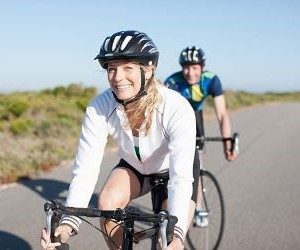HOW DO I BUILD CONFIDENCE IN CYCLING RACES?
Confidence in cycling races doesn’t come overnight—it’s built through preparation, mindset, and experience. Riders who combine technical skill with mental resilience are better equipped to handle the chaos of group starts, the pressure of competition, and the unpredictability of race dynamics. This article explores strategies to boost confidence, from structured training and tactical awareness to psychological tools used by pros. Whether you’re a beginner or an experienced rider, these insights will help you line up at the start line ready to perform at your best.

Training as the foundation of confidence
Confidence begins with preparation. Cyclists who train consistently arrive at races knowing they’ve built the physical base to handle the demands. Proper training reinforces not only fitness but also trust in one’s ability to perform under stress.
Building physical fitness
Structured training plans that include endurance rides, interval sessions, and recovery days ensure that riders reach race day prepared. When your body is conditioned for the workload, you waste less energy worrying about whether you can finish and instead focus on racing strategically.
Practicing race simulations
Simulating race conditions during training—such as sprint intervals, drafting practice, or group rides—helps riders feel comfortable with the intensity and chaos of competition. By practicing these scenarios, beginners reduce anxiety when faced with real race dynamics.
Equipment familiarity
Confidence also comes from knowing your equipment won’t fail you. Riders should practice with the same bike, gearing, and nutrition they plan to use on race day. Mechanical mishaps are less intimidating when you’ve rehearsed quick fixes in training.
Stick to structured training with clear goals
Incorporate group rides to mimic race settings
Test equipment and nutrition before race day
Use recovery strategically to prevent burnout
Ultimately, physical preparation eliminates self-doubt. Each training session completed is a deposit in the confidence bank, ensuring you arrive at the start line with trust in your own ability.
Mental strategies and race mindset
Even the fittest riders can falter without the right mindset. Confidence in racing requires mental resilience, focus, and the ability to manage stress under pressure. Mental strategies bridge the gap between preparation and performance.
Visualization techniques
Many professional cyclists use visualization to mentally rehearse successful outcomes. Beginners can practice this by imagining smooth starts, decisive attacks, or calm navigation through chaotic pack moments. These mental scripts prepare the brain to respond confidently during actual races.
Positive self-talk
Negative thoughts often creep in during tough moments. Replacing them with affirmations like “I am strong” or “I can hold this pace” reinforces confidence. Over time, this internal dialogue shapes how riders respond to pressure and fatigue.
Managing pre-race nerves
It’s normal to feel anxious before a race. Instead of fighting nerves, channel them into focus. Deep breathing, structured warm-ups, and routines like checking equipment systematically help transform anxiety into readiness.
Use visualization before each race
Develop a calming pre-race routine
Adopt positive, consistent self-talk
Accept nerves as part of competition
With practice, these mental strategies make high-pressure environments feel less overwhelming, allowing riders to stay composed and confident no matter the race scenario.
Tactics, experience, and long-term growth
True confidence in racing also comes from tactical knowledge and accumulated experience. Riders who understand how to position themselves, conserve energy, and respond to moves from competitors develop lasting self-assurance.
Race tactics and positioning
Knowing when to conserve energy, when to draft, and when to attack separates confident riders from anxious ones. Positioning near the front but out of the wind saves energy while providing a clear view of moves. This tactical awareness prevents panic and builds composure.
Learning from mistakes
Every race offers lessons. Instead of viewing mistakes as failures, confident riders treat them as stepping stones. Analyzing post-race performance—whether misjudging pacing or reacting too late to a break—creates valuable feedback for growth.
Building experience gradually
Beginners shouldn’t expect confidence after one race. Start with local events, then progress to larger competitions. Each race adds familiarity with pace, group dynamics, and personal limits, which compounds into long-term self-belief.
Practice energy conservation and drafting
Position strategically in the peloton
Analyze each race for lessons learned
Progress gradually through race levels
Ultimately, confidence in cycling races is built through a cycle of preparation, mindset, and experience. By investing in all three areas, riders transform uncertainty into composure, racing not with fear but with assurance and enjoyment.






